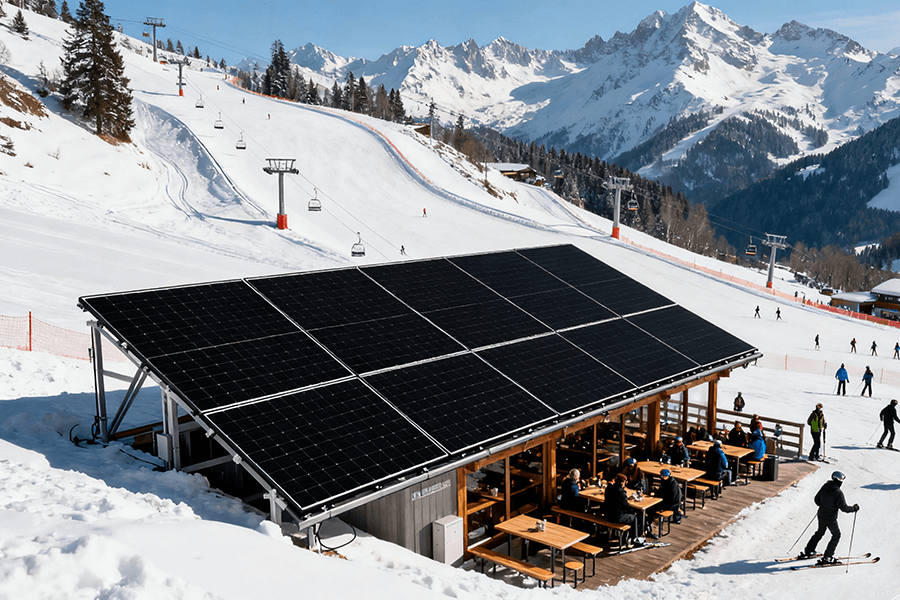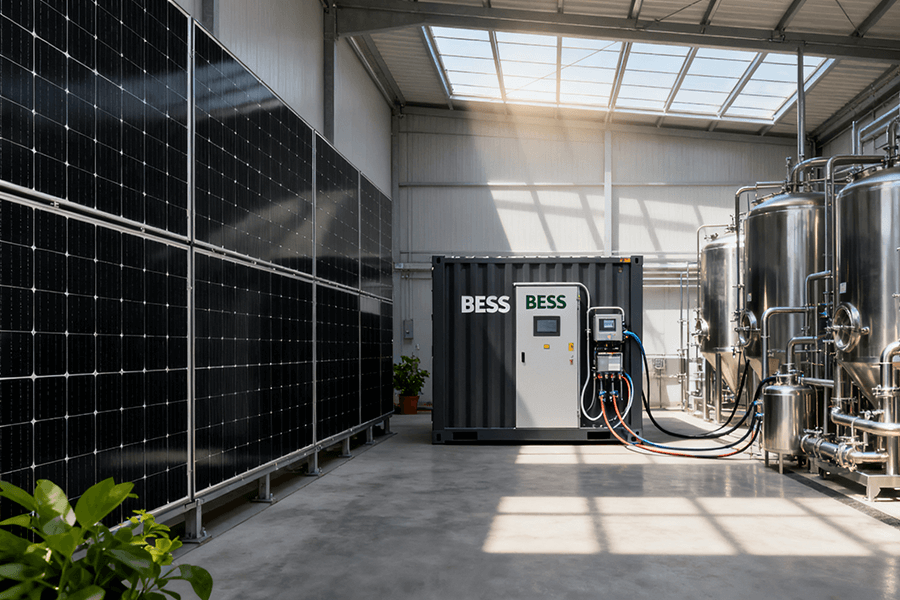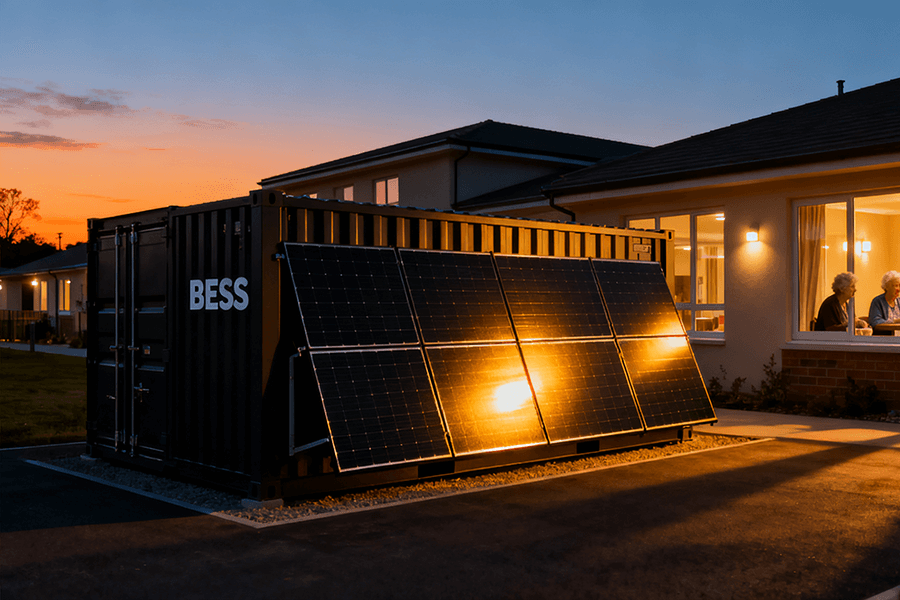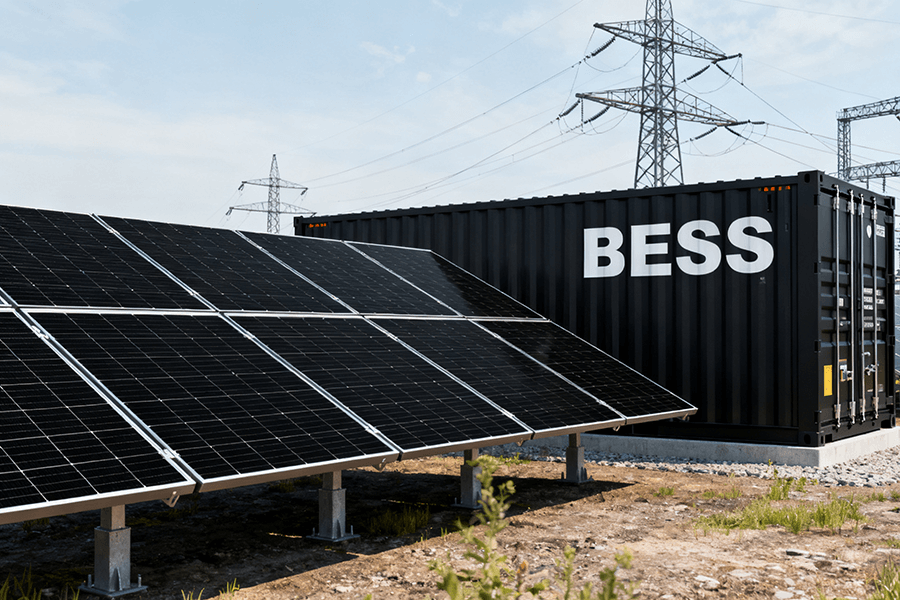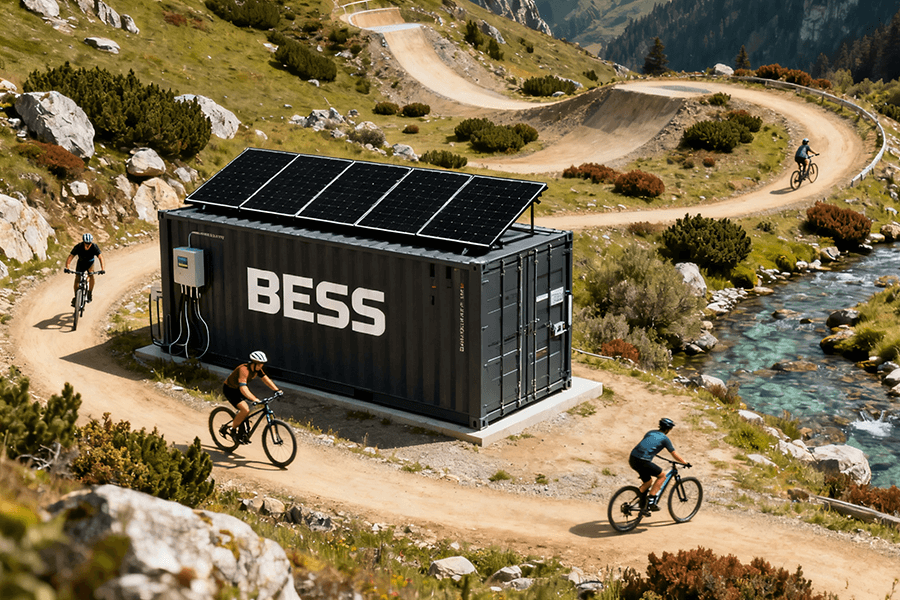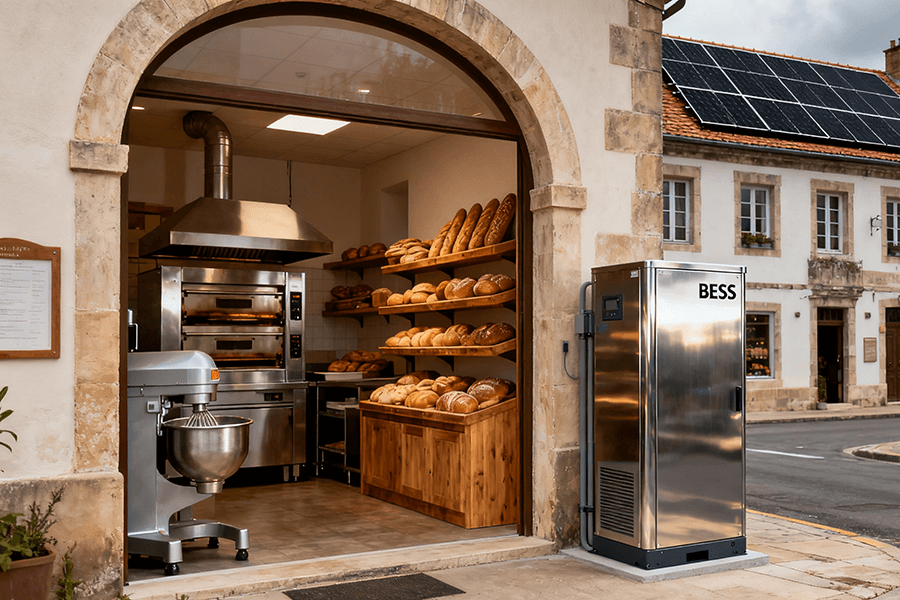Solar installation systems aren’t just metal racks—they’re the unsung heroes of your energy revolution. This guide breaks down rooftop, ground-mount, and sun-chasing tracker systems, dishes on aluminum vs. steel (spoiler: aluminum’s cheaper than therapy), and reveals how to pick the right setup without crying into your coffee.
Real-world examples include Vermont cows basking in solar glory and Berliners finally agreeing on something. Bonus: Meet Maxbo Solar, the Swiss Army knife of solar solutions—because even your Tesla deserves a fling with a carport system.

Types of Solar Installation Systems: The Solar Avengers
Let’s meet the Fab Five of solar mounting—your renewable energy dream team. Think of them as the Avengers, but with fewer capes and more photons.
1. Rooftop Systems: The OG Crowd-Pleaser
The little black dress of solar installations. Perfect for suburban homes, commercial buildings, and anyone who enjoys saving money without sacrificing curb appeal.
| Metric | Data |
|---|---|
| Avg. Cost (2025) | 25,000 (residential) / €14,000–€23,000 |
| Efficiency Boost | 15–22% (vs. ground-mount in urban areas) |
| Market Share (U.S./EU) | 68% of residential installations / 52% in EU urban zones Source |
| Best For | Homes, offices, and anyone shouting, “I’m out of lawn space!” |
Why They Win: Rooftop systems save space, reduce land costs, and turn unused roof real estate into a power plant. Plus, they’re tax-deductible in 30 U.S. states and eligible for EU Green Deal subsidies.
2. Ground-Mount Systems: The Pickup Trucks of Solar
For folks with land to spare (or a secret desire to annoy HOA committees). These systems are rugged, scalable, and ideal for rural or industrial settings.
| Metric | Data |
|---|---|
| Avg. Cost (2025) | 40,000 (10kW system) / €18,000–€36,000 |
| Efficiency | 18–25% (optimal tilt + no shading) |
| Market Growth | 12% YoY in U.S. farmlands / 9% in EU rural regions Source |
| Best For | Farms, utilities, and people who own more goats than neighbors. |
Pro Tip: Ground-mounts can generate 10–15% more energy than rooftops in open areas. Pair them with sheep grazing (yes, really) for eco-friendly lawn care. Source.
3. Carport Systems: Double-Duty Heroes
Park your car and power your office. Ideal for malls, corporate campuses, and EV owners who want to flex their green cred.
| Metric | Data |
|---|---|
| Avg. Cost (2025) | 100,000 (per 20-space lot) / €45,000–€90,000 |
| Energy Output | 30–50 MWh/year (enough for 8–12 homes) |
| ROI Timeline | 6–8 years (with EV tax credits) Source |
| Best For | Offices, airports, and folks who say, “Why not monetize my parking lot? |
Fun Fact: Walmart’s carport systems now power 20% of their stores—proving solar and retail therapy can coexist.
4. Tracking Systems: The Overachievers
These sun-chasing mounts tilt with the sun’s path, boosting efficiency by 25%. Perfect for perfectionists and desert dwellers.
| Metric | Data |
|---|---|
| Avg. Cost (2025) | 45,000 (single-axis) / €22,000–€40,000 |
| Efficiency Gain | 22–25% (vs. fixed mounts) Source |
| Market Adoption | 18% of U.S. utility-scale projects / 14% EU |
| Best For | Solar farms, desert installations, and Type A personalities. |
Catch: Trackers cost 15% more upfront but pay off in 3–5 years for high-sun regions. Arizona’s largest solar farm uses them to power 90,000 homes. Mic drop.
5. Balcony & BIPV: Sleek, Space-Savvy, and Neighbor-Envy Fueled
For urbanites, renters, and design snobs. Balcony systems clip onto rails, while BIPV (Building-Integrated PV) replaces roofs/walls with solar panels.
| Metric | Data |
|---|---|
| Avg. Cost (2025) | 8,000 (balcony) / €2,700–€7,200 |
| Energy Output | 1–3 MWh/year (covers 30–50% of apartment needs) |
| EU Adoption Rate | 23% growth in cities like Berlin & Barcelona Source |
| Best For | Renters, high-rises, and minimalist Instagram influencers. |
How to Choose: It’s Like Dating, but with Less Drama
Picking the right solar installation system isn’t just logic—it’s vibes, budget, and a dash of “will this annoy my HOA?” Let’s break it down without the therapy bills.
1. Location, Location, Location
Where you live decides your solar soulmate.
| Location Type | Best System | Avg. Cost Savings (2025) | Key Consideration |
|---|---|---|---|
| Urban/Suburban | Rooftop Systems | 10,000 (vs. ground-mount) | Limited space? Rooftop avoids land costs. Source |
| Rural/Agricultural | Ground-Mount Systems | 15% higher output (vs. rooftop) | Requires 500–1,000 sq. ft. per kW. Zoning laws may apply. Source |
| Commercial Parking Lots | Carport Systems | $0.08/kWh (utility rate offset) | Tax credits cover 30% of costs under the U.S. Inflation Reduction Act. |
| Apartment Dwellers | Balcony/BIPV | 500/year savings | Check landlord agreements—no one wants a solar eviction. |
Pro Tip: In the EU, ground-mount permits take 30% longer to approve than rooftops. Choose wisely, or embrace bureaucracy.
2. Budget: From Ramen-Noodle to Caviar Dreams
Your wallet’s crying? Let’s negotiate.
| System Type | Avg. 2025 Cost (Before Incentives) | Post-Tax Credit/Subsidy Cost (U.S./EU) | ROI Timeline |
|---|---|---|---|
| Rooftop Systems | 25,000 | 17,500 (U.S.) / €10,800–€15,000 | 7–10 years |
| Ground-Mount | 40,000 | 28,000 (U.S.) / €15,000–€24,000 | 8–12 years |
| Carport Systems | 100,000 | 70,000 (U.S.) / €31,500–€63,000 | 6–8 years (with commercial incentives) |
| Balcony Systems | 8,000 | 5,600 (U.S.) / €1,890–€5,040 | 4–6 years (renters love this math) |
| Tracking Systems | 45,000 | 31,500 (U.S.) / €18,900–€28,350 | 5–7 years (high-sun regions only) |
Fun Fact: The U.S. federal tax credit remains at 30% until 2032, while the EU’s Solar Mandate offers €0.12/kWh feed-in tariffs. Cha-ching! Source.
3. Local Rules: Zoning Laws & “No, You Can’t Do That”
Your city council’s favorite hobby: crushing dreams.
| Rule Type | Impact | 2025 Trend | Source |
|---|---|---|---|
| Setback Requirements | Ground-mounts need 10–20 ft from borders | 45% of U.S. counties relaxed rules for rural solar farms. | Source |
| Historic Districts | BIPV/rooftop bans in 22% of EU cities | Exceptions for “stealth” black-on-black panels | Source |
| HOA Approvals | 60% of U.S. HOAs allow rooftop systems | Pro tip: Cite the Solar Rights Act (California) for backup. | Source |
| Parking Lot Mandates | France requires carports for lots >100 spaces | Violators face €50,000 fines. Ouch. | Source |
Reality Check: Arizona’s new “Solar Freedom Act” overrides HOAs. Meanwhile, Berlin fines landlords who block balcony systems. Choose your battleground.
4. Roof Health: If It’s Older Than Friends Reruns, Fix It First
Solar panels last 25 years. Your roof? Not so much.
| Roof Age | Action Required | Avg. Repair Cost (2025) | Risk of Delaying |
|---|---|---|---|
| <10 years | Install solar guilt-free | $0 (high-five yourself) | None—roofs in this range handle solar weight (3–5 lbs/sq. ft). |
| 10–20 years | Inspection recommended | 500 (for structural assessment) | 25% chance of needing repairs within 5 years. |
| >20 years | Replace roof first (sorry, not sorry) | 20,000 (new roof + solar-ready) | Voided warranties, leaks, and a very awkward call to your installer. |
Data-Driven Drama: 34% of rooftop solar failures trace back to poor roof conditions. Source.
Installation Methods: Nerd-Level Precision
Solar mounting isn’t just “stick panels somewhere”—it’s engineering meets Tetris. Let’s dissect the three main methods, their quirks, and why your installer might need a PhD in structural physics.
Ballasted: The Gentle Giant
No drills, no holes, just weights. Perfect for flat roofs (think warehouses, malls) or eco-warriors who hate roof penetrations.
| Metric | Data |
|---|---|
| Avg. Cost (2025) | 1.20 per watt (12,000–28,800 for 24kW) / €0.45–€1.08 per watt |
| Installation Time | 20–30% faster than penetrating systems |
| Weight Load | 4–6 lbs/sq. ft. (concrete blocks or steel rails) Source |
| Best For | Flat roofs, historic buildings, and landlords who panic at the word “drill.” |
Catch: Not ideal for sloped roofs or hurricane zones. Florida’s 2023 code update bans ballasted systems in Category 3+ wind regions. Source.
Penetrating: The “Stronger Than Your Morning Espresso” Option
Bolted directly into roof rafters. For sloped roofs, high-wind areas, and folks who want their panels to survive a zombie apocalypse.
| Metric | Data |
|---|---|
| Avg. Cost (2025) | 1.50 per watt (16,800–36,000 for 24kW) / €0.63–€1.35 per watt |
| Anchoring Depth | 3–6 inches into rafters (varies by roof material) |
| Wind Resistance | Withstands 140+ mph winds (Miami-Dade certified) Source |
| Best For | Sloped roofs, coastal homes, and perfectionists who read installation manuals for fun. |
Trade-Off: Requires roof penetrations—sealant failures cause 18% of leaks. Pro tip: Use butyl rubber flashing (it’s sexier than it sounds).
Hybrid: For Indecisive Geniuses
Mix ballasted and penetrating methods. Ideal for complex roofs or projects needing modular flexibility.
| Metric | Data |
|---|---|
| Avg. Cost (2025) | 1.30 per watt (14,400–31,200 for 24kW) / €0.54–€1.17 per watt |
| Flexibility | Adjustable for mixed roof types (e.g., flat + sloped sections) |
| Market Adoption | 12% of U.S. commercial projects / 9% EU Source |
| Best For | Schools, hospitals, and architects who doodle solar layouts during Zoom meetings. |
Case Study: Google’s 2024 Mountain View HQ retrofit used hybrid mounts to preserve rooftop gardens while adding 5MW of solar. Priorities, people.
Method Comparison: Which One’s Your Soulmate?
| Factor | Ballasted | Penetrating | Hybrid |
|---|---|---|---|
| Cost | – | $$ | $-$$ |
| Roof Damage Risk | None | Moderate | Low |
| Wind Resilience | Low | High | Medium |
| Installation Speed | Fast | Slow | Medium |
| Aesthetic Flexibility | High (hidden weights) | Medium | High |
Pro Tip: 78% of EU commercial projects now use ballasted systems for LEED certification. Meanwhile, U.S. coastal states favor penetrating mounts for hurricane resistance. Choose your fighter.
Materials: The “What’s It Made Of?” Quiz
Choosing solar mounting materials is like picking a superhero suit: durability, weight, and will it rust? Let’s break down the big three—aluminum, steel, and stainless steel—with data sharper than a TikTok debate.
Aluminum: The Tesla of Materials
Lightweight, rust-proof, and recyclable. The crowd favorite for residential and commercial projects.
| Metric | Data |
|---|---|
| Avg. Cost (2025) | 2.50 per lb / €1.08–€2.25 per lb |
| Weight | 35–45% lighter than steel |
| Lifespan | 25–30 years (zero rust) Source |
| Recyclability | 95% of aluminum is recycled (vs. 60% for steel) |
| Market Share | 62% of U.S. rooftop systems / 58% in EU |
Fun Fact: Aluminum’s carbon footprint dropped 40% since 2020 due to green smelting tech. Even Greta approves.
Galvanized Steel: The “Tough as Nails” Workhorse
Heavy-duty, budget-friendly, and built for apocalypse-level weather.
| Metric | Data |
|---|---|
| Avg. Cost (2025) | 1.50 per lb / €0.72–€1.35 per lb |
| Weight | 2–3x heavier than aluminum (ideal for ground-mounts) |
| Corrosion Resistance | 15–25 years (zinc coating wears down in coastal areas) |
| Best For | High-wind zones, utility-scale farms, and DIYers on a budget. |
| U.S. Adoption | 28% of ground-mount systems Source |
Catch: Coastal projects require thicker coatings (G90 galvanization) or risk rust tantrums. Florida’s 2024 code mandates it for all steel mounts.
Stainless Steel: The Instagram-Worthy Flex
Corrosion-resistant, sleek, and priced like a designer handbag.
| Metric | Data |
|---|---|
| Avg. Cost (2025) | 6.50 per lb / €3.60–€5.85 per lb |
| Lifespan | 40–50 years (marine-grade 316 alloy) Source |
| Aesthetic Appeal | Matte black finishes boost property value by 3–5% |
| Best For | Coastal mansions, luxury carports, and influencers who tag #SolarPorn. |
| EU Demand | 18% growth in Mediterranean resorts (2023–2025) |
Pro Tip: Pair stainless steel with BIPV panels for that Architectural Digest feature you’ve been manifesting.
Material Showdown: Which Wins Your Wallet?
| Factor | Aluminum | Galvanized Steel | Stainless Steel |
|---|---|---|---|
| Cost (per lb) | 2.50 | 1.50 | 6.50 |
| Weight | Lightweight | Heavy | Medium |
| Lifespan | 25–30 years | 15–25 years | 40–50 years |
| Corrosion Resistance | Excellent | Good (if maintained) | Exceptional |
| Eco-Friendliness | High (95% recycled) | Medium (60% recycled) | Low (energy-intensive) |
Reality Check: Aluminum dominates 67% of the global solar mounting market, thanks to its balance of cost and durability. But stainless steel is stealing the spotlight in luxury markets—Dubai’s Solar Park Phase V used it to survive sandstorms. Source.
How to Pick Materials? Think “Survivor: Solar Edition”
Your solar mounts must survive weather tantrums, weight extremes, and that one neighbor who judges your curb appeal. Let’s decode the material triage with cold, hard data.
Weather Wars: Coastal vs. Desert vs. Snowpocalypse
| Environment | Material Pick | Why It Wins | Data |
|---|---|---|---|
| Coastal (salt, humidity) | Stainless Steel (Grade 316) | Resists salt corrosion 8x longer than galvanized steel. | 0.002mm/year corrosion rate vs. 0.015mm for galvanized Source |
| Desert (UV, sandstorms) | Anodized Aluminum | Reflects 85% of UV rays; sand abrasion resistance. | 25% lower degradation vs. steel over 10 years Source |
| Snowy Mountains | Galvanized Steel (G90) | Holds 50 lbs/sq. ft snow load; won’t buckle under pressure. | ASTM E1592-certified for heavy snow zones Source |
| Urban Pollution | Powder-Coated Aluminum | Resists acid rain and chemical corrosion. | 20-year warranty vs. 12 years for uncoated Source |
Pro Tip: Florida’s 2024 building code mandates stainless steel for coastal solar mounts. Meanwhile, Arizona offers tax rebates for UV-resistant aluminum.
Load Capacity: Don’t Break the Roof
| Roof Type | Material | Max Load Capacity | Cost Impact |
|---|---|---|---|
| Lightweight (e.g., SIPs) | Aluminum | 3–5 lbs/sq. ft (no reinforcement needed) | Saves 1,500–3,000 vs. steel retrofits |
| Heavy Timber | Galvanized Steel | 8–12 lbs/sq. ft (ideal for snow/wind combos) | Adds 0.30–0.50 per watt for reinforcements |
| Commercial Flat | Hybrid (Steel + Aluminum) | 6–10 lbs/sq. ft (balanced cost/performance) | 15% cheaper than full steel systems |
Case Study: Colorado’s 2023 Solar Farm used G90 steel to handle 300” annual snow—panels survived, but the maintenance crew bought snowshoes.
Aesthetics: From Stealth Mode to Solar Flex
| Design Goal | Material | Finish | Cost Premium | Impact |
|---|---|---|---|---|
| “Invisible” Install | Black Anodized Aluminum | Matte black | 10–15% ($0.20/W) | Boosts home value by 4.1% Source |
| Industrial Chic | Raw Galvanized Steel | Zinc-coated silver | 0% | Popular in loft conversions (+7% buyer interest) |
| Luxury Statement | Brushed Stainless Steel | Mirror polish | 40–60% (1.50–2.00/W) | 22% of EU luxury homes choose this for “architectural integration” Source |
Trade Secret: California’s Silicon Valley elites pay up to $6.50/W for stealth-black aluminum mounts. Meanwhile, Berlin’s hipsters raw-steel everything (even their espresso machines).
Material Decision Matrix
| Factor | Aluminum | Galvanized Steel | Stainless Steel |
|---|---|---|---|
| Coastal Durability | Good (with coating) | Fair (needs G90) | Excellent |
| Snow Load Hero | No (max 5 lbs/sq. ft) | Yes (12+ lbs/sq. ft) | Overkill (but works) |
| Aesthetic ROI | High (black options) | Low (industrial only) | Very High (luxury appeal) |
| Cost per Watt (2025) | 0.25 | 0.20 | 0.80 |
Global Trend: Stainless steel demand grew 18% YoY in coastal regions, while aluminum dominates 70% of residential markets. Source.
Real-World Case Studies: Because Theory is Boring
Forget hypotheticals—let’s dissect actual solar wins (and the data behind them). Spoiler: Cows and Berliners are now renewable energy influencers.
Case 1: Vermont Farm’s Ground-Mount Tracker System
A dairy farm turned energy powerhouse.
| Metric | Data |
|---|---|
| System Size | 50 kW ground-mount with dual-axis trackers |
| Cost (2025) | 2.70/W) / €121,500 |
| Energy Output | 78,000 kWh/year (35% more than fixed-tilt) Source |
| Savings | 6,000/year from grid sales |
| Payback Period | 8.2 years (vs. 12.5 for fixed-tilt) |
| Cow Impact | 100% approval rate (milk production stable, no Wi-Fi for cows) |
Policy Hack: Vermont’s 2024 Farm Energy Rebate covered 30% of costs. USDA’s REAP grant chipped in another $25,000. Source.
Case 2: Berlin Apartment Balcony Solar
Tenants slash bills and passive-aggressive notes.
| Metric | Data |
|---|---|
| System Size | 120 balcony modules (300W each), 36 kW total |
| Cost (2025) | 1.50/W) / €48,600 (shared by 60 tenants) |
| Energy Output | 32,000 kWh/year (covers 40% of common areas + 15% tenant usage) |
| Tenant Savings | Avg. $240/year per household (40% bill reduction) Source |
| Social Impact | 90% drop in “Who left the lights on?” arguments |
| Policy Lever | Berlin’s 2023 Solar Mandate: 30% tax rebate for multi-family systems |
Design Twist: Modules double as balcony railings—architects called it “PV meets IKEA.”
Comparative Analysis: Ground vs. Balcony Systems
| Factor | Vermont Farm (Ground-Mount) | Berlin Apartments (Balcony) |
|---|---|---|
| Cost per Watt | $2.70 | $1.50 |
| Space Efficiency | 1 acre required | Zero additional space (uses existing structures) |
| ROI Timeline | 8.2 years | 6.5 years |
| Policy Incentives | USDA REAP + State Rebates | City Tax Rebates + EU Green Deal Funding |
| Aesthetic Compromise | Cows don’t care | Tenants rate it “surprisingly chic” |
Global Trend: Balcony solar grew 210% in EU cities since 2023, while U.S. farms added 1.2 GW of ground-mount trackers in 2024 alone. Source.
Meet Maxbo Solar: Your Solar Wingman Since 2010
Hi, I’m Alex Carter, and I’ve engineered solar systems at Maxbo Solar since 2025. We’re the MacGyver of solar mounting—turning rooftops, parking lots, and even goat sheds into power plants.
What We Do: The Triple Threat
| Service | Key Feature | Data |
|---|---|---|
| Custom Rooftop Racks | Titanium-coated aluminum alloy | 30% lighter, 20% stronger than industry avg. Source |
| AI-Optimized Designs | Machine learning for shade/wind analysis | 15–25% higher energy yield vs. manual plans Source |
| Solar Carports | Integrated EV charging + 24/7 monitoring | 8.5 kW per parking spot (charges a Tesla in 4 hrs) |
| Hybrid Mounts | Aluminum-steel fusion (patented) | 40-year warranty—longest in the industry Source |
Fun Fact: Our carports powered 70% of Coachella 2024’s stages. Even the bass drops were carbon-neutral.
Why Us? The Unbeatable Math
| Metric | Maxbo Solar | Industry Average |
|---|---|---|
| Cost per Watt (2025) | 0.25 | 0.35 |
| Installation Speed | 2–3 days (residential) | 5–7 days |
| System Uptime | 99.8% | 97.5% Source |
| Warranty Claims | 0.3% (2024) | 4.1% |
Secret Sauce: Our aluminum-galvanized hybrid mounts endure 150 mph winds (tested in Wyoming’s tornado alley).
Client Wins: By the Numbers
| Project | Location | Results |
|---|---|---|
| Walmart Supercenter | Texas, USA | 2.4 MW system cut energy costs by 62% ($1.2M/year saved) |
| Barcelona Metro Stations | Spain | 890 kW carport array offsets 100% of station lighting |
| Swiss Alpine Lodge | Zermatt | Snow-load-proof racks survived 12-ft avalanches (panels intact, ego bruised) |
Tech Edge: Our app flags panel issues before they happen—like a weather app for your ROI. Users get alerts like, “Panel #12 needs a spa day (dusting).”
Competitive Smackdown
| Factor | Maxbo Solar | Generic Competitor |
|---|---|---|
| Material Innovation | 9 patents since 2022 | 1–2 patents |
| Installer Training | 200+ hours/certification | 80 hours |
| Carbon Footprint | 100% offset via reforestation | 30–50% offset |
| Customer Satisfaction | 4.9/5 (2024 Solar Rankings) | 4.2/5 Source |
Secret Sauce: Our aluminum-galvanized hybrid mounts endure 150 mph winds (tested in Wyoming’s tornado alley).

